I’ve decided to focus on the Swift River’s Y Pool. Worked hard and caught some fish (pictures at bottom).
Honestly, the Y Pool has always intimidated me, how you’re within 15 yards of other anglers, many of whom have been fishing it for decades. They can see how you cast, whether you hook fish, and how skillfully or poorly you play and land a trout.
But, I decided to stop caring about that.
I bought a 000 wt. rod and decided to learn how to fish at the Y Pool. I know such a light rod sounds odd, but I kept running into many savvy anglers who fish such a rod at the Swift. I bought the rod from a place with a 90-day no questions asked return policy, and so, it was risk free.
I’ve fished about 30 hours with it at the Y Pool over a course of three visits. I tied up some dries and went for it. I also decided to see if I could nymph at the Pool.
I was skunked the first time at the Y Pool, but felt great to land some in the Bubbler and at Hemlock Pool.
But, slowly, I’ve gotten the hang of it. I landed about ten trout on each of the past two outings. Since I’m fishing many hours each time, the trout per hour ratio is pretty poor. For example, I recently fished next to the legendary Bob Bailey. He just killed them with his dries. For every one fish I hooked, he hooked five. Extremely impressive to watch.
Since I started fishing the Swift just last September, here are my lessons learned:
Pick your poison. If you’re going to truly fish dries (and not emergers) up top, you have to make a decision between fear and greed. Do you want to go with 8x and risk break-offs? Or, do you want to go with 6x but risk fewer takes? Bob Bailey uses 8x and 9x. He aggressively plays the fish, and he is fine with fish breaking off when they dart for the weeds. So, pick your strategy, but understand the trade-offs.
Use extra-long leaders. I’ve watched many a trout dart to my dry fly and eyeball it closely. Then, they backpedal with the fly for many seconds, eyeing it the whole time. Once they see drag, they swim away. They’re that smart at this point.
Forget traditional nymphing. I tried Euro-nymphing and indicator nymphing (with a New Zealand indicator) at the Y Pool. No takes. At this point, the pool is too shallow for tightline nymphing, and while I’ve seen others successfully indicator-nymph at the Y Pool, I didn’t find success.
Fish just below the surface. Nearly all of my takes were from drifting flies in the surface film or below. Fishing a dry purely on top didn’t work for me. So, I went subsurface with emergers and other flies. And, I successfully was able to use 6x.
Hit the spillway. I think that area is under-fished. There are many fish there. It’s challenging, as the current is very slow, and many fish aren’t in feeding mode. They just hover, mostly in place, almost as though they’re asleep. Here’s where the 000 wt. rod really rocked. I caught quite a few fish by sneaking up on them from behind and casting a fly that would drift down to them. I found that if you can place a fly precisely on their nose, at times, they’ll take it. Fun to see the take.
So, those are my lessons learned so far. I’d love to hear from others who know the Y Pool.

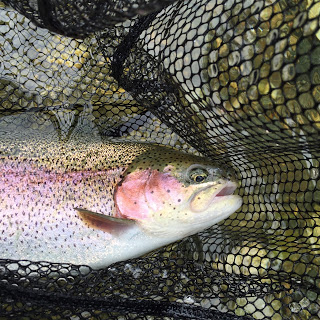


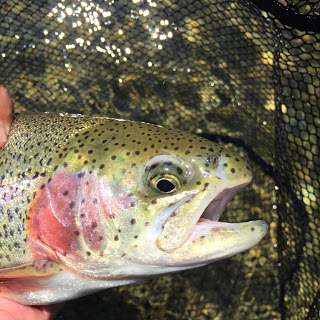
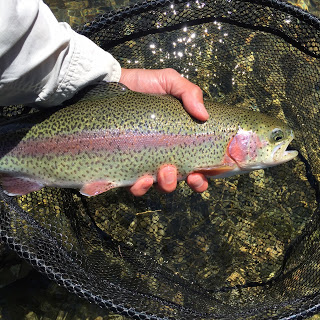
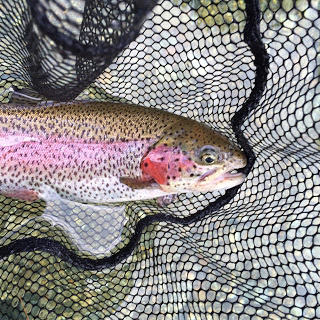
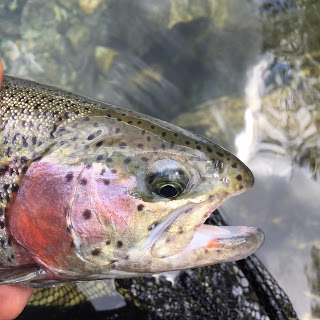
Good write-up, many of us plug away at the Swift in the dog days of summer, it's always a challenge. A 000 is what the locals use, I wiggled a TXL 000 recently and found it too light but maybe it just takes time to get used to. I also wonder how you can indicator nymph with something that light, can you manage it ok? What kind/size of dries fo you fish below the film and how do you get them there?
Not sure how you indicator-nymph at the Y Pool, given all the "vertical drag" that exists. I tried it and it didn't work. The trout trail a fly and see how it floats. If it's just floating along at a constant rate and depth, which is what an indicator is supposed to do, they shy away. I think an exception would be at the tail end of the Y Pool. But, where the Bubbler drains into the Y Pool is an area rife with lots of vertical and horizon drag. Regarding flies, I had good luck floating something that I could see. White is one color that is easy to see. But, the trick is a drag-free float. Sometimes, that only lasts a few seconds, given all the cross currents. And, if something looks awry, I strip set. As someone told me: hooksets are free.
*horizontal
Hi – I just stumbled upon your blog and like it. However you are giving away an awful amount of detail here! Please keep the rest of us in mind…I still appreciate the rare day when you can get the y pool to yourself and enjoy the surroundings, peace and quiet. The way fly fishing is supposed to be! Those days are fewer and fewer at the swift lately with the 'other' blog selling the place out. Hope you keep up the good work but exact locations and fly selection should be for anglers who put in the hours and experiment.
Hi, I really appreciate your honest feedback. Will keep your suggestions in mind. My goal is to encourage people to get out there, but I do understand that our mission here is not to be an "online guide," as part of the fun of fly fishing is being creative and mastering the craft.
Will strive to keep that balance!
The Y-Pool is NO secret… Neither is the fact that you need to use small flies. I figured this out within a trip or 2 to the pool and now I can consistently catch there… and if someone asks me for advice on anything, I'm always more than happy to share. Even give them a few flies.
I thought this was a very informative post; there are tons of people who are rookies at the Swift, and just need a little advice. There is a lot more to fooling those spooky rainbows than fly selection. Good post Jo!
I get the whole "spot burning" thing, but the Y-Pool is too late to spot burn… it's already on fire!
Scott
Where did u get the 000 rod? Where else locally would u use it?
I Googled around to find a good deal. Not sure yet where else I'd use it, but it's been great on the Swift.